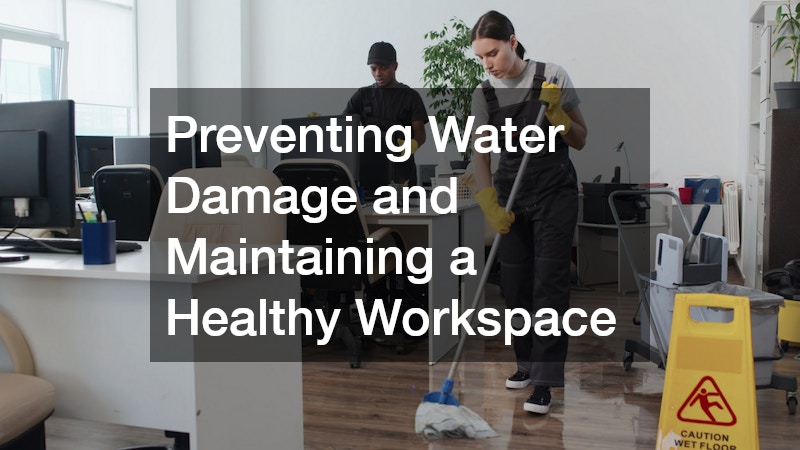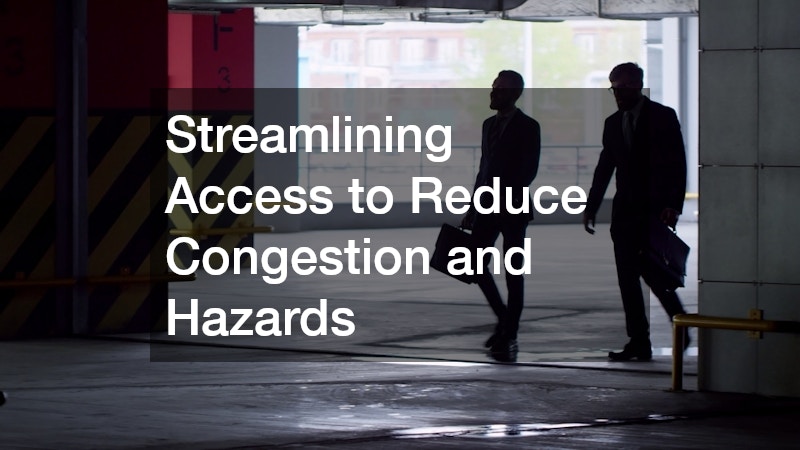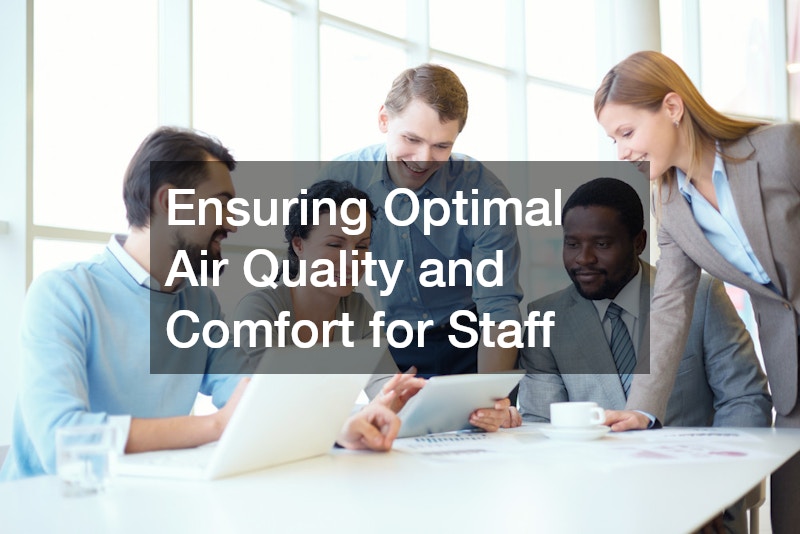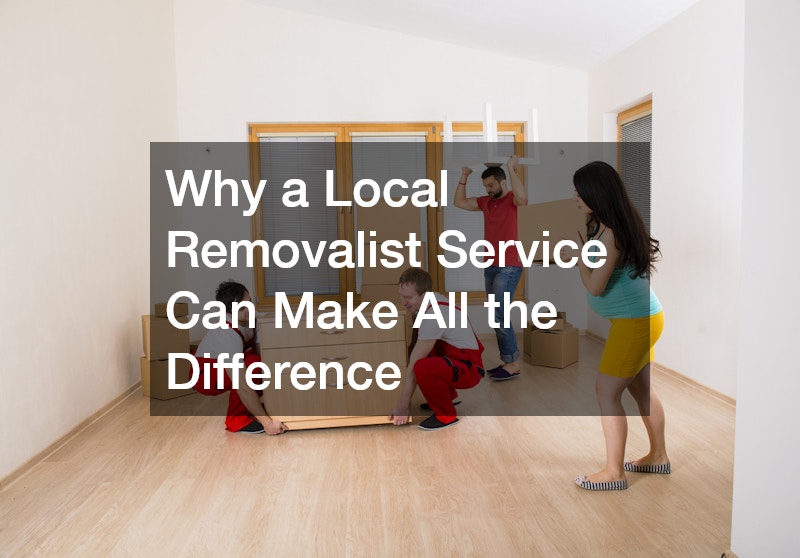Creating a workspace that maximizes productivity while prioritizing safety is more important than ever for modern businesses. Office environments have evolved from simple desks and chairs into complex systems that integrate safety, efficiency, and comfort. Employees spend a significant portion of their day in the office, and the design, layout, and maintenance of this space directly impact their performance and overall well-being. From preventing potential hazards to enhancing workflow, a thoughtfully planned office supports both operational success and employee satisfaction.
Small and medium-sized businesses, in particular, often face the challenge of balancing functional design with safety compliance. With limited resources, it can be tempting to overlook essential upgrades, but neglecting office safety and efficiency can result in higher costs, downtime, and employee dissatisfaction. By addressing potential issues proactively—ranging from structural modifications and electrical upgrades to fire safety and air quality management—business owners can foster a work environment that is both productive and secure.
This blog will explore several strategies for optimizing your office for safety and productivity. We will discuss essential measures to ensure your office layout meets safety standards, prevent water damage, maintain efficient electrical systems, implement fire prevention measures, and improve furniture and equipment. Additionally, we’ll examine parking area organization, weatherproofing, and air quality considerations. By following these guidelines, businesses can create a workspace that protects employees, enhances efficiency, and supports long-term success.
Ensuring Your Office Layout Meets Safety Standards
An office layout plays a pivotal role in maintaining both productivity and safety. A well-planned workspace minimizes hazards, facilitates efficient movement, and ensures employees can perform their tasks without unnecessary strain or risk. Key elements include strategically placed workstations, clear walkways, and accessible emergency exits. A professional assessment of your office layout can help identify potential safety gaps that may not be immediately obvious.
Engaging a renovation surveyor can provide valuable insight into how your office space aligns with safety standards. These professionals evaluate building compliance with local codes, identify areas that may require structural modifications, and suggest adjustments to optimize workflow. From ensuring appropriate spacing between desks to confirming the integrity of staircases and emergency routes, a renovation surveyor can help prevent accidents and enhance overall workplace safety.
In addition to compliance, a thoughtful layout fosters productivity by encouraging collaboration without compromising individual focus. Open-plan areas, when paired with designated quiet zones, allow for effective teamwork and concentrated work simultaneously. Strategic placement of communal areas, such as break rooms or conference spaces, reduces unnecessary foot traffic in critical work zones.

Preventing Water Damage and Maintaining a Healthy Workspace
Water damage can cause significant disruptions in an office, affecting both safety and productivity. Leaks, condensation, or flooding can lead to structural issues, damage to office equipment, and the growth of mold or mildew, which negatively impacts indoor air quality. Early identification and preventive measures are essential to safeguarding the office environment.
Working with a commercial property water remediation company ensures that any water-related issues are addressed promptly and professionally. These experts assess potential vulnerabilities, implement corrective measures, and offer solutions to prevent recurring problems. Whether it’s sealing roof leaks, repairing damaged pipes, or improving drainage systems, a commercial property water remediation company can mitigate risks before they escalate into costly repairs.
Beyond structural concerns, maintaining a dry and clean workspace contributes to employee health and morale. Mold and moisture can trigger allergies and respiratory issues, leading to absenteeism and decreased productivity. Routine inspections, combined with proper ventilation and humidity control, ensure a comfortable and healthy environment.
Upgrading Electrical Systems for Efficiency and Reliability
Reliable electrical infrastructure is critical to the smooth operation of any office. Outdated or improperly installed systems can cause power outages, damage sensitive equipment, and even pose serious safety hazards such as fires or shocks. Upgrading electrical systems not only enhances safety but also boosts operational efficiency and reduces energy costs.
Partnering with a wholesale electrical supplier allows businesses to access high-quality components for electrical upgrades at competitive prices. From circuit breakers and wiring to outlets and lighting systems, wholesale electrical suppliers provide the materials needed for safe and efficient installations. Using durable and compliant electrical products ensures that your office infrastructure meets current safety standards and can accommodate modern technology demands.
Electrical upgrades can also include energy-efficient lighting, surge protection, and backup power systems. By investing in these improvements, businesses can reduce downtime, minimize equipment damage, and lower energy bills. Additionally, a well-designed electrical layout improves workflow by ensuring that power sources are conveniently located and accessible without creating trip hazards from exposed cords or overloaded outlets. Prioritizing electrical reliability supports both safety and productivity in a modern office setting.
Implementing Effective Fire Prevention Measures
Fire safety is a non-negotiable aspect of office management. Offices are filled with electrical equipment, flammable materials, and high-traffic areas, all of which increase the potential risk of fires. Implementing comprehensive fire prevention measures is crucial to protect employees, minimize property damage, and comply with legal safety requirements.
A properly executed fire sprinkler system design is an integral component of fire prevention strategies. Effective fire sprinkler systems can detect and control fires quickly, significantly reducing the spread of flames and smoke. Consulting with professionals ensures that sprinklers are optimally placed, calibrated, and compliant with local regulations. In addition to sprinklers, offices should maintain fire extinguishers, smoke detectors, and clear evacuation routes.
Regular training for employees on fire safety procedures, including the use of extinguishers and emergency exits, further enhances preparedness. Preventative maintenance, such as checking alarm systems and sprinkler functionality, ensures that safety measures remain effective over time.

Accessing the Right Tools Without Cluttering Your Space
Modern offices often require specialized tools and equipment for various tasks, from maintenance to IT support. However, storing these tools without cluttering the workspace is a challenge. An organized system for accessing necessary equipment not only keeps the office tidy but also improves efficiency by reducing the time spent searching for supplies.
Utilizing equipment rentals is an effective strategy for managing tool needs without permanent storage issues. Renting equipment as needed allows businesses to access high-quality, specialized tools for temporary projects without investing in costly purchases or creating storage burdens. This approach is particularly useful for tasks that are infrequent or require equipment that is expensive to maintain.
In addition to rentals, designated storage areas and clear labeling systems can further reduce clutter and improve accessibility. Mobile tool carts, shelving units, and lockable cabinets help maintain an organized environment while ensuring that critical tools are readily available.
Enhancing Furniture and Fixtures for Longevity and Safety
Office furniture and fixtures play a significant role in employee comfort, productivity, and safety. Poor-quality furniture can cause discomfort, strain, or even injury, while deteriorating fixtures may present hazards such as sharp edges or instability. Investing in durable, well-maintained furniture is essential for creating a safe and productive work environment.
Powder coating services can extend the lifespan and enhance the appearance of metal office furniture and fixtures. This finishing process protects against rust, scratches, and daily wear, ensuring that chairs, desks, shelving units, and other items remain in excellent condition. By maintaining high-quality furniture, businesses not only safeguard employees from potential injuries but also present a professional and aesthetically pleasing workspace.
Regular inspections and maintenance of office furniture, including tightening screws, repairing broken components, and replacing worn items, further enhance safety. Ergonomic considerations, such as adjustable chairs, monitor stands, and sit-stand desks, also contribute to employee comfort and reduce the risk of musculoskeletal problems.

Streamlining Access to Reduce Congestion and Hazards
Efficient access points are crucial to preventing congestion and minimizing hazards in office facilities. Poorly designed entryways, narrow doors, and unclear pathways can lead to accidents, delays, and frustration among employees and visitors. Optimizing these areas improves flow, safety, and overall office efficiency.
Installing advanced parking lot entry and exit systems enhances traffic management and reduces bottlenecks. Automated gates, access controls, and clear directional signage help regulate vehicle movement while ensuring security. Properly designed entry and exit points prevent accidents, facilitate smooth deliveries, and provide convenient access for employees and guests.
Inside the building, well-marked pathways, designated loading areas, and accessible entryways further reduce congestion. Incorporating features such as ramps, handrails, and anti-slip surfaces ensures that all individuals can navigate the space safely.
Improving Navigation and Organization in Office Parking Areas
Parking areas are often overlooked, but they play a critical role in safety and convenience. Confusing layouts, inadequate lighting, and poorly defined spaces can lead to vehicle damage, accidents, and frustration. Ensuring a clear and organized parking environment supports both employee satisfaction and operational efficiency.
Utilizing a line striping service helps define parking spaces, pedestrian zones, and traffic lanes. Clear markings improve navigation, reduce collisions, and guide drivers safely through the lot. Line striping also enhances the overall appearance of the office property, giving a professional impression to clients and visitors.
In addition to markings, strategic placement of signage, lighting, and pedestrian walkways improves both safety and accessibility. Reserved spaces for employees, visitors, and deliveries ensure that traffic flows smoothly without unnecessary interference. Regular maintenance of parking surfaces, including repainting stripes and repairing potholes, maintains a safe environment over time.
Maintaining a Safe and Weather-Proof Environment
Protecting the office from environmental elements is crucial for long-term safety and productivity. Leaks, drafts, and weather-related damage can compromise structural integrity, damage equipment, and create uncomfortable working conditions. Proactive measures help preserve both the physical space and employee comfort.
Engaging in commercial roof repairs ensures that the building remains watertight and structurally sound. Timely repairs prevent leaks, mold growth, and insulation damage, reducing the risk of costly disruptions. A well-maintained roof also contributes to energy efficiency, keeping indoor temperatures stable and reducing heating and cooling expenses.
Weatherproofing extends beyond the roof to include windows, doors, and exterior walls. Proper sealing, insulation, and protective coatings safeguard the office from wind, rain, and temperature fluctuations. Regular inspections and preventative maintenance identify potential issues before they become significant problems.

Ensuring Optimal Air Quality and Comfort for Staff
Air quality and indoor climate significantly impact employee health, comfort, and productivity. Poor ventilation, inconsistent temperatures, and exposure to pollutants can lead to discomfort, fatigue, and respiratory issues, which ultimately reduce efficiency and morale. Implementing effective HVAC solutions ensures a consistent and healthy indoor environment.
Partnering with a professional HVAC company allows businesses to design, install, and maintain systems tailored to their specific needs. From air filtration and humidity control to heating and cooling efficiency, a well-maintained HVAC system provides a comfortable and healthy workspace year-round. Regular maintenance, such as filter replacements, duct cleaning, and system inspections, ensures optimal performance and prevents costly breakdowns.
In addition to comfort, proper HVAC management contributes to energy efficiency, reducing operational costs while minimizing environmental impact. By prioritizing air quality and climate control, businesses create a workspace that supports employee well-being, reduces absenteeism, and fosters sustained productivity.
Optimizing an office for safety and productivity requires a comprehensive approach that addresses multiple aspects of the workspace. From layout design and structural integrity to fire safety, electrical reliability, and water damage prevention, each element contributes to a functional and secure environment. Engaging professionals, such as a renovation surveyor or a commercial property water remediation company, ensures that the office meets legal standards and addresses potential hazards proactively.
Investments in equipment, furniture, and infrastructure further enhance both efficiency and safety. Utilizing equipment rentals for specialized tools, employing powder coating services to extend the lifespan of fixtures, and upgrading electrical components from a wholesale electrical supplier all support a long-term, productive workspace. Fire safety, optimized entry and exit systems, organized parking areas with line striping service, and weatherproofing through commercial roof repairs collectively reduce risks and operational disruptions.
Finally, prioritizing employee comfort and health through effective climate control and air quality management via a professional HVAC company ensures that staff remain focused and engaged. By adopting these strategies, businesses create an environment that is not only safe and compliant but also inspiring and efficient. A well-maintained office promotes productivity, enhances morale, and safeguards the company’s most valuable assets: its people. Through careful planning, professional guidance, and regular maintenance, businesses can achieve a workspace where safety and productivity coexist seamlessly.



